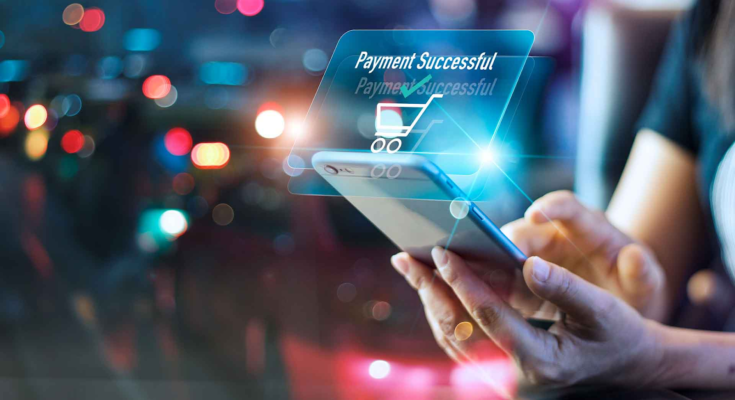In recent years, the landscape of digital payments has undergone a significant transformation, driven by technological advancements and changing consumer behaviors. As we look to the future, it is essential to understand the emerging trends and innovations that are shaping the way we conduct transactions. This article explores the future of digital payments, highlighting key trends and innovations that are set to redefine the payment ecosystem.
The Rise of Contactless Payments
One of the most notable trends in digital payments is the rise of contactless payments. With the advent of Near Field Communication (NFC) technology, consumers can make payments simply by tapping their smartphones or contactless cards at payment terminals. This trend has gained momentum, especially during the COVID-19 pandemic, as consumers sought safer and more hygienic payment options.
Benefits of Contactless Payments
- Speed and Convenience: Contactless payments are faster than traditional methods, allowing for quick transactions without the need for cash or physical contact.
- Enhanced Security: Contactless payments use encryption and tokenization, making them more secure than traditional card swipes.
- Wider Acceptance: As more merchants adopt contactless payment technology, consumers can enjoy the convenience of using their preferred payment methods.
The Growth of Mobile Wallets
Mobile wallets have become increasingly popular, providing consumers with a convenient way to store payment information and make transactions using their smartphones. Platforms like Apple Pay, Google Pay, and Samsung Pay have revolutionized the way people pay for goods and services.
Key Features of Mobile Wallets
- Integration with Loyalty Programs: Many mobile wallets allow users to store loyalty cards and coupons, making it easier to earn rewards while shopping.
- Peer-to-Peer Payments: Mobile wallets often include features for sending money to friends and family, simplifying the process of splitting bills or sharing expenses.
- In-App Purchases: Mobile wallets enable seamless in-app purchases, enhancing the user experience for mobile applications.
The Emergence of Cryptocurrencies
Cryptocurrencies, such as Bitcoin and Ethereum, have gained significant attention in recent years as alternative forms of digital payments. While still in their infancy, cryptocurrencies are poised to disrupt traditional payment systems.
Advantages of Using Cryptocurrencies
- Decentralization: Cryptocurrencies operate on decentralized networks, reducing the need for intermediaries and lowering transaction fees.
- Global Accessibility: Cryptocurrencies can be used for cross-border transactions without the need for currency conversion, making them accessible to a global audience.
- Enhanced Privacy: Transactions made with cryptocurrencies can offer greater privacy compared to traditional payment methods, appealing to consumers concerned about data security.
The Role of Artificial Intelligence in Payments
Artificial Intelligence (AI) is playing an increasingly important role in the digital payments landscape. From fraud detection to personalized customer experiences, AI technologies are enhancing the efficiency and security of payment systems.
Applications of AI in Digital Payments
- Fraud Detection: AI algorithms can analyze transaction patterns in real-time to identify suspicious activities and prevent fraud before it occurs.
- Personalized Recommendations: AI can analyze consumer behavior to provide personalized payment options and promotions, enhancing the overall shopping experience.
- Chatbots and Customer Support: AI-powered chatbots can assist customers with payment-related inquiries, providing instant support and improving customer satisfaction.
The Impact of Blockchain Technology
Blockchain technology is revolutionizing the way transactions are recorded and verified. By providing a secure and transparent ledger, blockchain has the potential to enhance the efficiency of digital payments.
Benefits of Blockchain in Payments
- Transparency: Blockchain technology allows for transparent transaction records, reducing the risk of fraud and increasing trust among participants.
- Reduced Transaction Costs: By eliminating intermediaries, blockchain can significantly lower transaction fees, making it an attractive option for businesses and consumers alike.
- Faster Settlements: Blockchain enables near-instantaneous settlements, reducing the time it takes for transactions to be processed and funds to be transferred.
The Rise of Buy Now, Pay Later (BNPL) Services
The Buy Now, Pay Later (BNPL) model has gained popularity among consumers seeking flexible payment options. BNPL services allow customers to make purchases and pay for them in installments over time, often without interest.
Advantages of BNPL Services
- Increased Affordability: BNPL services make it easier for consumers to afford larger purchases by spreading the cost over several payments.
- Improved Cash Flow: Consumers can manage their cash flow more effectively by using BNPL services, allowing them to make necessary purchases without immediate financial strain.
- Higher Conversion Rates for Merchants: Offering BNPL options can lead to higher conversion rates for online retailers, as consumers are more likely to complete purchases when flexible payment options are available.
The Future of Biometric Payments
Biometric payment methods, such as fingerprint scanning and facial recognition, are emerging as secure alternatives to traditional payment methods. These technologies leverage unique biological traits to authenticate transactions, enhancing security and convenience.
Benefits of Biometric Payments
- Enhanced Security: Biometric authentication is difficult to replicate, making it a secure option for verifying transactions.
- Convenience: Biometric payments eliminate the need for passwords or PINs, streamlining the payment process for consumers.
- Reduced Fraud: The use of biometric data can significantly reduce the risk of fraud, as it is tied to the individual rather than a physical card or device.
Conclusion
The future of digital payments is bright, with numerous trends and innovations shaping the way we conduct transactions. From the rise of contactless payments and mobile wallets to the emergence of cryptocurrencies and biometric authentication, the payment landscape is evolving rapidly. As technology continues to advance, businesses and consumers alike must adapt to these changes to stay competitive and meet the demands of a digital-first world.
By embracing these trends and innovations, organizations can enhance their payment systems, improve customer experiences, and drive growth in an increasingly digital economy. As we move forward, the ability to navigate the evolving landscape of digital payments will be crucial for success in the modern marketplace.




